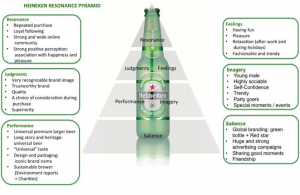You probably remember this wonderful time as a kid when you were just lying comfortably in the bed and your parent was telling you adventures of superheroes, beautiful princesses and courageous knights. Stories are with us all the time and everywhere we go. Even in ancient times, those who knew how to tell the stories had the power. In this article, you will find out why storytelling is important in your brand creation and how to improve your social media communication using this concept.
Suddenly I woke up. It was dark and hot. In the air, I could smell weird, but pretty nice vanilla-like fragrance. I wanted to say something but I could not open my mouth. I wanted to stand up, but I was not able to move my legs… there was no connection between my brain and body. I wanted to check what time is it, but there was no phone around… ‘This is the end’ I thought… and then I woke up. Again. This time for real. There was a vanilla candle on my night table still smoldering lightly. I looked at my phone: Time to post your next post on Instagram! ‘Yes, I am back in reality.’
If I just wrote at the beginning: Storytelling is a very important part, not only of our lives but especially is important in marketing creation; you would not wonder why here – on Postfity’s – blog someone is writing about nightmares. That’s the thing!
Indeed, in marketing story is the key. Why?
1. Attraction
First of all, in any business, the rule is simple: more clients = more money. Obviously, to have clients, you have to attract them to you. There is a no better option to do so, than to intrigue them with some incredible story. These have a big impact on our imagination, which means brain stimulation, cortisol activation, and overall excitation.
2. Relation building
If you “get the foot at the door”, it’s a way easier to continue a conversation. Once you attract someone with the story, look, smell, taste etc. – it’s yours. Storytelling is a great way to build an emotional relationship with your client. Let’s be honest, we live in the 21st century when people already invented so many products and services that the only thing that distinguishes one from another is price, design or unique emotional value – story. If you want to be the one that stands out of the crowd, tell something.
3. Emotional engagement
Why do people watch movies online? What for they play games? Why they read thrillers? Why some of them do bungee jumping? The answer is simple: to experience emotions. Obviously, no one wants to feel those negative once (like anger or sadness), but: amazement, shock, excitation, happiness are needed in every human’s life. Trust me. So, if you plan to create your brand, think about which emotions you want to make your clients feel.
4. Authencity
The most important thing is to be yourself. If your brand is created with no general strategy, overall idea and fake relationship (even between you and your coworkers), it has no chances to create a real story that will gain people’s attention. Eventually, if you are a great storyteller, and you know how to lie and make people believe in it 😉 (NOT RECOMMENDED!)
Now, let`s take a look at some examples. Case studies are always the most useful part!
ALLEGRO
Why not start with Allegro? This platform allows you to buy almost everything – starting with electronic devices, clothes, furniture, toys, sports equipment, on cars ending. Those products might be first or second – handed (depending on each case), but quality and price are always good! Below you can see how they communicate their service 😉
The clip at the beginning seems a bit long, but in the end, the story just takes you in and it’s simply impossible to stop it in the middle. Does your communication do the same?
NIKE
Another great example, which is actually a master of storytelling is Nike. For years this brand keeps the coherent communication and repeats the slogan Just do it!.
- Nike advertising uses the emotional branding technique of Heroism to inspire incredible customer loyalty all over the world. The hero starts from humble beginnings, challenges a foe greater than he, and against all odds, prevails.
- Nike marketing isn’t the only group that uses this archetype. Other brands use it by identifying a foe that their viewers can identify with hating and pit their product against it to build stronger customer loyalty
- Nike brand strategy takes the emotional marketing story of the Hero and turns it inward. You are the hero, and your lazy side is the villain.
The heroism is visible in their whole communication, as an example, I recommend to watch this:
HEINEKEN
Heineken’s long-standing company values are:
Passion for quality
Brands that people love
Enjoyment of life
Respect for people and planet
Code of Business Conduct
Enjoy Responsibly
It’s worth to notice that they put emphasis on positive association with drinking alcohol. They are trying to be associated with cultural events: music, dance etc. which attracts consumers who treat a beer as a form of relaxation with friends. The whole communication they build is based on values listed before.
The deeper insight and the story, which Heineken tells through its advertisements are related to this:
So, you already know what stories might touch people’s emotion now you just have to come up with the concept for your brand and start building communication-based on that.
“The best way to persuade people is with your ears – by listening to them.”
~Dean Rusk
As a conclusion: people love stories, you just have to listen to them and sell yours.
And there’s a great way that will help you to tell your story in social media – post scheduling. Try Postfity social post planning – 30 days for FREE!





